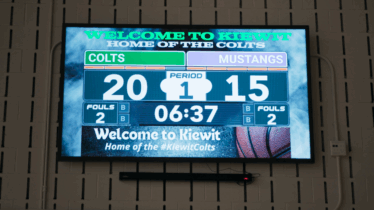The cost of technology in schools has increased dramatically since the start of the pandemic, as students and faculty were forced to leave their classrooms for remote learning environments almost overnight. According to the Learning Counsel, the United States K-12 sector spent $35.8 billion on technology in 2020, including hardware, software and digital services. Hardware spending alone hit $16.6 billion, which is up from $12.1 billion in 2019. In the same report, they found that 87% of schools and districts issued personal computing devices to students.
This data only shows how critical it is for schools to have updated technology that can support fast, seamless connectivity and high storage and throughput needs. However, not all districts can afford to deploy an entirely new fleet of devices. In 2019, The Hechinger Report found that American school districts were up to over $400 billion in debt, and that number is only expected to grow.
Some good news is that, in March 2021, The American Rescue Plan announced they earmarked $7.2 billion in E-Rate funds to allow districts to adopt new equipment and broadband connectivity for students.
Your guide to SSDs in the virtual classroom
Virtual learning is here to stay. Learn why fast, reliable storage is critical in education. Download Now
By using available funds to start investing in hardware like solid state drives (SSDs), school districts can update their existing devices to meet the demands of today’s remote and in-person learning environment at a lower cost than if they purchased new laptops for every student. And it’s important to note that school districts will need to plan and budget accordingly — device deployment costs can vary depending on the type of device, the amount a school is purchasing and the size of the school’s IT department.
Using SSDs to support technology upgrades
The types of upgrades and updates needed across the country can vary. Districts in Buffalo, N.Y., for example, recently reported that only half of their laptops that were issued for the 2020-2021 school year were updated and ready to use. There are other districts looking to increase bandwidth within their schools, with teachers expanding their use of digital curriculum software and subscriptions. According to the CoSN 2021 EdTech Trends Survey report, 62% of respondents are seeing major IT increases for those technologies, which require more than just bandwidth. They also need the right amount of storage and computing power to render the software quickly so that teachers can do their jobs without having to wait for graphics or programs to load.
Fortunately, SSDs are able to address all of those needs. With more durability and the power to process data faster than traditional hard disk drives (HDDs), SSDs are an ideal storage device solution for the educational market. Educational applications in the K-12 market, such as digital worksheets, video lessons, presentation tools, video conferencing tools and screencasting applications, are only going to continue to evolve. That means existing school laptops with spinning hard drives will most likely have to be upgraded, as they aren’t fast or large enough to handle graphics- or processor-intensive programs. Laptops and desktops with SSDs installed can handle all of these digital options without missing a beat.
Ensuring reliability
From a reliability perspective, since SSDs don’t require moving parts, they have fewer potential points of failure. They can also retrieve data more quickly than traditional HDDs, which involve a moving arm that has to go out over the spinning disk to locate information. SSDs do it all electronically, so you can be sure to expect lower latency.
Learn more about how storage solution devices like SSDs can help save money in education and improve overall student and educator satisfaction and productivity.








